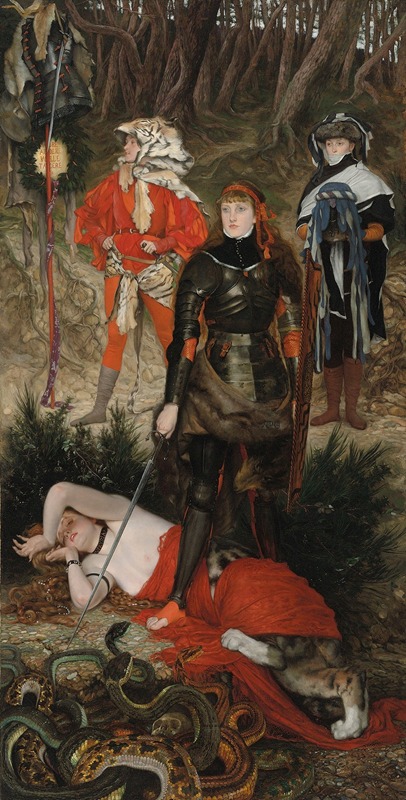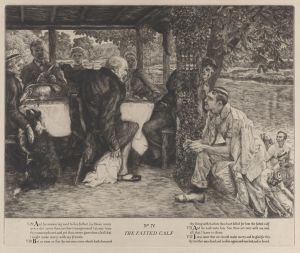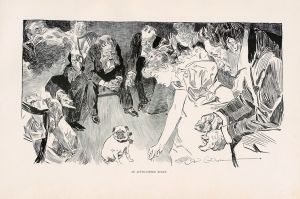
Triumph of the Will – The Challenge
A hand-painted replica of James Tissot’s masterpiece Triumph of the Will – The Challenge, meticulously crafted by professional artists to capture the true essence of the original. Each piece is created with museum-quality canvas and rare mineral pigments, carefully painted by experienced artists with delicate brushstrokes and rich, layered colors to perfectly recreate the texture of the original artwork. Unlike machine-printed reproductions, this hand-painted version brings the painting to life, infused with the artist’s emotions and skill in every stroke. Whether for personal collection or home decoration, it instantly elevates the artistic atmosphere of any space.
"Triumph of the Will – The Challenge" by James Tissot is a painting that captures a moment of intense personal or moral confrontation. James Tissot, born Jacques Joseph Tissot on October 15, 1836, in Nantes, France, was a French painter and illustrator known for his detailed and often narrative-driven works. Tissot's career spanned several decades and included a variety of subjects, from society portraits to religious themes.
Tissot initially studied at the École des Beaux-Arts in Paris, where he was influenced by the academic style of painting. He exhibited his works at the Paris Salon and gained recognition for his skillful depiction of contemporary life and fashion. In the 1870s, Tissot moved to London, where he continued to build his reputation, particularly for his portraits of women in fashionable attire.
"Triumph of the Will – The Challenge" is one of Tissot's lesser-known works, and there is limited information available about its specific context or the exact date of its creation. However, the painting is consistent with Tissot's style, characterized by meticulous attention to detail and a focus on narrative elements. The title suggests a theme of overcoming adversity or facing a significant test of character, which aligns with Tissot's interest in exploring human emotions and moral dilemmas.
Tissot's work often reflected his personal experiences and the broader social and cultural currents of his time. After the death of his companion Kathleen Newton in 1882, Tissot experienced a profound personal transformation that led him to focus increasingly on religious subjects. He returned to France and embarked on a series of paintings illustrating scenes from the Bible, which became some of his most celebrated works.
Despite the limited information about "Triumph of the Will – The Challenge," it can be appreciated within the broader context of Tissot's oeuvre. His ability to convey complex narratives and emotions through his art has earned him a lasting place in the history of 19th-century painting. Tissot's works are held in numerous public and private collections around the world, and his contributions to both French and British art continue to be studied and admired.
James Tissot passed away on August 8, 1902, in Buillon, France. His legacy endures through his diverse body of work, which captures the spirit and intricacies of the Victorian era and beyond.

















